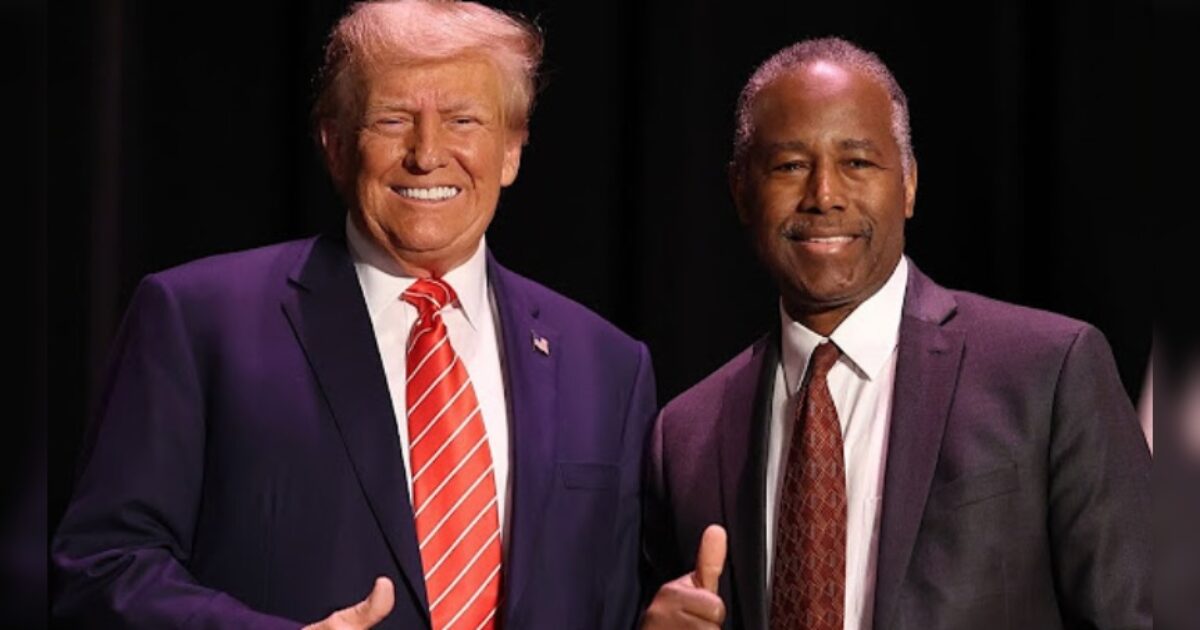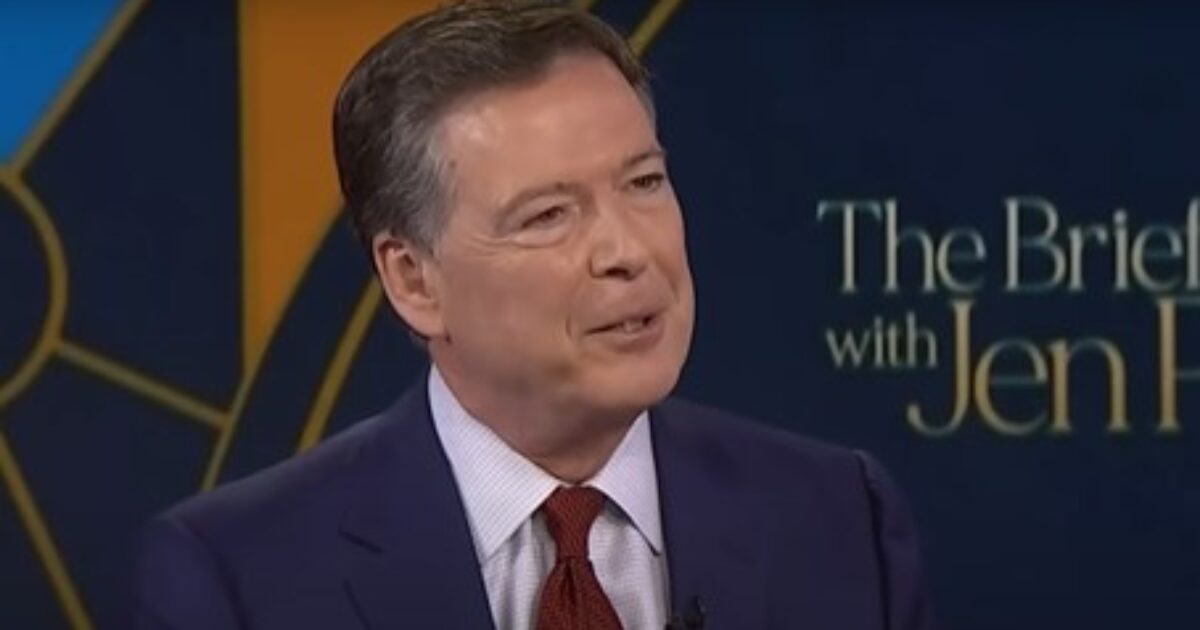| What: | Office of Management and Budget memo “E-Authentication Guidance for Federal Agencies” |
| When: | Dec. 16, 2003 |
| Why it matters: | The memo directed agencies to ensure secure and trustworthy online transactions. Agencies have made plenty of progress, but still struggle with the issue today amid evolving cyber threats and AI-inflated fraud risks. |
Politics
‘E-authentication’ memo puts the focus on secure, usable digital identity


(Justin note: Still figuring out potential photos/multimedia)
Like many federal technology initiatives from the early aughts, the Bush administration’s “e-authentication” push can be viewed in retrospect as both forward leaning and, more than 20 years later, very outdated.
The December 2003 “e-authentication” memo from the Office of Management and Budget pushed agencies to manage the secure access to online services. Amid a broad push to open up access to a digital government, the memo ensured agencies also focused on security and privacy.
“I do think in a lot of ways, the government did lead the way in projecting what was required to defend against the threats as we saw at that moment in time,” Jordan Burris, former chief of staff to the federal chief information officer and vice president of public sector solutions at identity security firm Socure, said in an interview.
In the decades since the 2003 memo, however, identity management has become exponentially more complex and difficult, as the demand for digital services — whether internal to the workforce or public facing — has skyrocketed.
Identity management technologies have evolving rapidly. But cyber attackers and fraudsters alike are taking advantages of gaps and lapses in identity management to steal data and money. Adversaries are already using artificial intelligence to supercharge their attacks using AI-aided phishing, deep fakes and more.
Meanwhile, agencies and organizations of all types have struggled to keep pace with the threats, according to Jeremy Grant, the former director of the National Strategy for Trusted Identities in Cyberspace and coordinator of the Better Identity Coalition.
“Over the last 10 years, I’d argue that government writ large has been looking at this issue a lot less strategically and proactively than it should be,” Grant said.
The one constant in the digital identity challenge has been the tension between access and security.
“It really sits at that center point of your user’s experience and the security and the protection that you’re able to provide,” Ryan Galluzzo, the National Institute of Standards and Technology’s digital identity program lead, said in a recent interview with Federal News Network. “So it has this very unique blend of people need to be able to use it, and particularly if you’re public facing, you need to be able to make sure it’s supporting the broader population of users that you have, but it also needs to be deployed in a way that supports security.”
Leaning forward on identity
In Grant’s view, the government’s online identity management push got going during the Clinton administration, when the Defense Department piloted the first “smart cards,” leading to the adoption of the Common Access Card (CAC).
The General Services Administration also had a smart card program office to ensure the civilian side of government could take advantage of the technology.
“This is really promising technology to start to transform government and start to digitize a lot of paper-based processes,” Grant said of the thinking at the time.
The 2003 e-authentication memo, meanwhile, came amid the “e-government” push during the Bush administration. It directed agencies to take a risk management approach to authenticating the identity of online users, whether they be a federal employee accessing an internal system or a member of the public seeking access to an online government service.
“The administration is committed to reducing the paperwork burden on citizens and businesses, and improving government response time to citizens — from weeks down to minutes,” then-OMB Director Joshua Bolten wrote in the memo. “To achieve these goals, citizens need to be able to access government services quickly and easily by using the Internet. This guidance document addresses those federal government services accomplished using the Internet online, instead of on paper. To make sure that online government services are secure and protect privacy, some type of identity verification or authentication is needed.”
Burris said the government was “leaning in” at a time to address online identity infrastructure strategically.
“We had to stop thinking as much in a siloed manner as was being done with every agency kind of doing it for themselves,” he said.
The memo led to multiple major identity developments, including the first version of what would become NIST’s digital identity guidelines.
It also helped accelerate the adoption of federal public key infrastructure and the now ubiquitous Personal Identity Verification (PIV) card under Homeland Security Presidential Directive-12 signed in 2004.
While those latter developments helped agencies ensure the identity security of their enterprise workforce, the Obama administration started to look more toward public facing identity strategies as part of the National Strategy for Trusted Identities in Cyberspace (NSTIC).
Grant, who led the NSTIC program at NIST from 2011 to 2015, said the goal was to establish a national vision for security identity at a time when the digital economy was expanding rapidly.
“It laid out a very forward leaning vision of what the country should look to do on digital identity that relied heavily on partnering with the private sector to solve it, but it was also, bluntly, way ahead of where the market was at the time,” Grant said.
The NSTIC funded multiple projects to advance secure online transactions, especially to reduce the reliance on usernames and passwords. The initiative bolstered an emerging identity security industry that offered new tools for users to secure their online accounts and organizations to secure their enterprise networks.
The NSTIC also launched a project that would eventually lead to Login.gov, a single sign-on service that has garnered both plaudits and controversy. But like with “e-authentication,” the goal was to streamline access to online services by providing citizens with one login option for multiple agencies.
COVID fraud and AI
Under the Trump administration, agencies continued to deepen their digital modernization efforts. OMB sparked another governmentwide push to modernize identity management under a 2019 memo, “Enabling Mission Delivery through Improved Identity, Credential, and Access Management.”
Burris, who served as chief of staff to the federal CIO at the time, said the goal was to update several outdated policies and facilitate “continuous modernization” of identity, credential and access management systems.
“We wanted to also make sure that we were assigning ownership responsibility to the right organizations to say, ‘Hey, you have a key role in moving the conversation forward,’” Burris said. “We had to have that pinwheel for innovation, making sure that with that guidance, we weren’t getting in the way of what needed to come next. Because there was a vision of what a modern government would look like from an identity standpoint. And if we didn’t at least clean up the policy framework for it, which is effectively what we did with [the memo], we wouldn’t be able to pivot to what came next, like the push to zero trust.”
Indeed, the federal government would continue the push to “zero trust” cybersecurity under a 2022 Biden administration policy. Strong identity management practices are central to the zero trust concept, as hackers have long abused stolen identities and credentials to pull off devastating cyber attacks.
But the issue of online identity is also now wrapped up in the debate around public benefits fraud.
When agencies rushed to make federal aid available online during the COVID-19 pandemic, fraudsters pounced, using stolen identities and other techniques to steal an estimated $280 billion in relief funding.
Hackers and fraudsters alike are harvesting personal information available for purchase over the dark web to pull off their attacks. Artificial intelligence is also helping them supercharge their identity-based exploits. Generative AI, deep fakes, and automation are all helping make an already bad problem even worse.
“There’s an arms race that’s taking place where nation state actors are leveraging AI in order to disrupt benefits,” Burris said. “They’re using it in order to impersonate good people, whether you look at it from a deep fake standpoint, or just the scale of automation for collecting and using [personally identifiable information] in order to attack any single threaded view.”
Under the Biden administration, the monumental challenges sparked some ripples of support and progress. The 2022 zero trust strategy pushed agencies to adopt strong identity management technologies, particularly for their workforces.
And the 2023 National Cybersecurity Strategy set a strategic objective to “support development of an identity ecosystem.” But subsequent implementation plans for the strategy made little mention of that objective. According to Grant, the objective got bogged down by infighting over an executive order on fraud that never materialized.
Meanwhile, the Trump administration’s approach to digital identity management is still unclear.
While Elon Musk’s “Department of Government Efficiency” has made rooting out fraud a central pillar of its mission, Grant’s Better Identity Coalition wrote DOGE in January, urging it to take a broader view.
The administration has a chance to take “decisive action that will not only address government benefits fraud but also give Americans tools that they can use to better protect themselves everywhere they do business online,” the coalition wrote.
Grant argues digital identity is an issue of national security and a part of modern critical infrastructure.
“At a time when digital identity threats are becoming more pervasive, and when every one of what we would consider peer countries across the globe has a strategy and plan to elevate it as a national priority, we don’t have any vision at the national level of what good looks like and how to get there, or what bad might look like in terms of bad outcomes with digital identity,” Grant said.
Amid the fast-moving technological landscape, digital identity experts are watching a landmark update to NIST’s digital identity guidelines. The guidelines spelled out in Special Publication 800-63 are mandatory for federal agencies and are closely followed by industry.
NIST’s Galluzzo said his team hopes to have the final revisions out by the end of 2025.
The draft revisions to the guidelines account for emerging digital wallet and verifiable credential technologies, such as mobile driver’s licenses. They include performance requirements for biometric technologies, like facial recognition. And they focus on fraud prevention and phishing-resistant multifactor authentication, among many other areas.
“Any technology that can start to consolidate a smooth user experience with increased security is, I think, the kind of thing that can show a lot of value and gain a lot of traction,” Galluzzo said. “It’s why we’re so interested in things like passkeys and FIDO authenticators, as well as things like mobile wallets and the credentials that reside inside them, because they really do focus on bringing those two components together.”
NIST officials are also testing out standards for things like mobile driver’s licenses through the agency’s National Cybersecurity Center of Excellence. The focus is on public-private sector use cases for financial, government and healthcare purposes.
In many ways, the 2003 “e-authentication” memo’s focus on facilitating secure access continues to this day.
“Wherever you can find that nexus of secure and usable, I think is a really interesting innovation point for the overall industry, as well as for folks like us who are looking to help standardize those things and make sure they’re interoperable and make sure they are providing a consistent degree of protection, as well as that usability,” Galluzzo said.
The post ‘E-authentication’ memo puts the focus on secure, usable digital identity first appeared on Federal News Network.
Politics
President Trump Taps Dr. Ben Carson for New Role — A HUGE Win for America First Agenda

Dr. Ben Carson is the newest member of the Trump administration.
On Wednesday, former Secretary of the Department of Housing and Urban Development, Ben Carson, was sworn in as the national adviser for nutrition, health, and housing at the U.S. Department of Agriculture.
Agriculture Secretary Brooke Rollins shared that Carson’s role will be to oversee Trump’s new Big Beautiful Bill law, which aims to ensure Americans’ quality of life, from nutrition to stable housing.
After being sworn in, Carson shared, “Today, too many Americans are suffering from the effects of poor nutrition. Through common-sense policymaking, we have an opportunity to give our most vulnerable families the tools they need to flourish.”
WATCH:
BREAKING Dr. Ben Carson has been sworn in as the National Nutrition Advisor to Make America Healthy Again
THIS IS A HUGE WIN pic.twitter.com/Dr5AsSDkRM
— MAGA Voice (@MAGAVoice) September 24, 2025
Per USDA:
Today, U.S. Secretary of Agriculture Brooke L. Rollins announced that Dr. Benjamin S. Carson, Sr., M.D., was sworn in as the National Advisor for Nutrition, Health, and Housing at the U.S. Department of Agriculture (USDA).
“There is no one more qualified than Dr. Carson to advise on policies that improve Americans’ everyday quality of life, from nutrition to healthcare quality to ensuring families have access to safe and stable housing,” said Secretary Rollins.
“With six in ten Americans living with at least one chronic disease, and rural communities facing unique challenges with respect to adequate housing, Dr. Carson’s insight and experience is critical. Dr. Carson will be crucial to implementing the rural health investment provisions of the One Big Beautiful Bill and advise on America First polices related to nutrition, health, and housing.
“As the U.S. Secretary of Housing and Urban Development in the first Trump Administration, Dr. Carson worked to expand opportunity and strengthen communities, and we are honored to welcome him to the second Trump Administration to help lead our efforts here at USDA to Make America Healthy Again and ensure rural America continues to prosper.”
“Today, too many Americans are suffering from the effects of poor nutrition. Through common-sense policymaking, we have an opportunity to give our most vulnerable families the tools they need to flourish,” said Dr. Ben Carson. “I am honored to work with Secretary Rollins on these important initiatives to help fulfill President Trump’s vision for a healthier, stronger America.”
On Sunday, Dr. Carson was one of the many speakers at the memorial service of the late TPUSA founder Charlie Kirk.
During the memorial service, Carson highlighted that Kirk was shot at 12:24 p.m. and then continued to share the Bible verse John 12:24, which reads, “Verily, verily, I say unto you, Except a corn of wheat fall into the ground and die, it abideth alone: but if it die, it bringeth forth much fruit.”
WATCH:
Ben Carson reads John 12:24 at the Charlie Kirk’s funeral. Charlie was shot at 12:24.
It reads: “Very truly I tell you, unless a kernel of wheat falls to the ground and dies, it remains only a single seed. But if it dies, it produces many seeds”
God is moving and speaking. pic.twitter.com/0ZbVTAwwYl
— Danny Botta (@danny_botta) September 21, 2025
The post President Trump Taps Dr. Ben Carson for New Role — A HUGE Win for America First Agenda appeared first on The Gateway Pundit.
Politics
LEAKED MEMO: Deep State Prosecutors in the Eastern District of Virginia Claim There Isn’t Enough Evidence to Convict Comey Amid Reports of Imminent Indictment


On Wednesday evening, disgruntled officials in the Eastern District of Virginia leaked contents of a memo explaining why charges should not be brought against James Comey.
As reported earlier, former FBI Director James Comey is expected to be indicted in the Eastern District of Virginia in the next few days.
Comey will reportedly be charged for lying to Congress in a 2020 testimony about whether he authorized leaks to the media.
Officials in the Eastern District of Virginia are still fighting to stop Comey from being charged after Trump fired US Attorney Erik Siebert.
President Trump last week fired Erik Siebert as the US Attorney for the Eastern District of Virginia because he refused to bring charges against Letitia James, Comey, Schiff and others.
On Saturday evening, President Trump announced that he had appointed Lindsey Halligan – his personal attorney who defended him against the Mar-a-Lago raid – as US Attorney for the Eastern District of Virginia.
Now, with just days to go before the statute of limitations runs out to charge Comey for lying during a September 30, 2020 testimony, Lindsey Halligan is reportedly gearing up to indict Comey.
Prosecutors reportedly gave newly sworn-in Halligan a memo defending James Comey and explaining why charges should not brought against the fired FBI Director.
Per MSNBC’s Ken Dilanian:
Two sources familiar with the matter tell me prosecutors in the EDVA US attorney‘s office presented newly sworn US attorney Lindsey Halligan with a memo explaining why charges should not be brought against James Comey, because there isn’t enough evidence to establish probable cause a crime was committed, let alone enough to convince a jury to convict him.
Justice Department guidelines say a case should not be brought unless prosecutors believe it’s more likely than not that they can win a conviction beyond a reasonable doubt.
Two sources familiar with the matter tell me prosecutors in the EDVA US attorney‘s office presented newly sworn US attorney Lindsey Halligan with a memo explaining why charges should not be brought against James Comey, because there isn’t enough evidence to establish probable…
— Ken Dilanian (@DilanianMSNBC) September 24, 2025
The post LEAKED MEMO: Deep State Prosecutors in the Eastern District of Virginia Claim There Isn’t Enough Evidence to Convict Comey Amid Reports of Imminent Indictment appeared first on The Gateway Pundit.
Politics
Nearly 8 in 10 Voters Say the United States is in Political Crisis After the Assassination of Charlie Kirk

Nearly eight in ten voters believe that the United States is in a political crisis in the wake of the assassination of conservative icon Charlie Kirk.
According to a Quinnipiac University national poll of registered voters released on Wednesday, a massive 93 percent of Democrats, 84 percent of independents, and 60 percent of Republicans said the nation is in a political crisis.
“The Kirk assassination lays bare raw, bipartisan concerns about where the country is headed,” Quinnipiac University Polling Analyst Tim Malloy said of the poll results.
Quinnipiac reports:
Seventy-one percent of voters think politically motivated violence in the United States today is a very serious problem, 22 percent think it is a somewhat serious problem, 3 percent think it is a not so serious problem, and 1 percent think it is not a problem at all.
This is a jump from Quinnipiac University’s June 26 poll when 54 percent thought politically motivated violence in the United States today was a very serious problem, 37 percent thought it was a somewhat serious problem, 6 percent thought it was a not so serious problem, and 2 percent thought it was not a problem at all.
Nearly 6 in 10 voters (58 percent) think it will not be possible to lower the temperature on political rhetoric and speech in the United States, while 34 percent think it will be possible.
Over half, 54 percent, of voters believe the US will see increased political violence over the next few years. Another 27 percent said they think it will stay “about the same,” while just 14 percent believe it will ease.
A 53 percent majority also said they are “pessimistic about freedom of speech being protected in the United States.”
Surprisingly, a 53 percent majority also believes the current system of democracy is not working.
“From a perceived assault on freedom of speech to the fragility of the democracy, a shudder of concern and pessimism rattles a broad swath of the electorate. Nearly 80 percent of registered voters feel they are witnessing a political crisis, seven in ten say political violence is a very serious problem, and a majority say this discord won’t go away anytime soon,” Malloy added.
The vast majority, 82 percent, said the way that people discuss politics is contributing to the violence.
“When asked if political discourse is contributing to violence, a rare meeting of the minds…Republicans, Democrats, and independents in equal numbers say yes, it is,” Malloy said.
The survey was conducted from September 18 to 21 among 1,276 registered voters with a margin of error of +/- 3.3 percentage points.
The post Nearly 8 in 10 Voters Say the United States is in Political Crisis After the Assassination of Charlie Kirk appeared first on The Gateway Pundit.
-

 Entertainment6 months ago
Entertainment6 months agoNew Kid and Family Movies in 2025: Calendar of Release Dates (Updating)
-

 Entertainment3 months ago
Entertainment3 months agoBrooklyn Mirage Has Been Quietly Co-Managed by Hedge Fund Manager Axar Capital Amid Reopening Drama
-
Tech6 months ago
The best sexting apps in 2025
-

 Entertainment5 months ago
Entertainment5 months agoKid and Family TV Shows in 2025: New Series & Season Premiere Dates (Updating)
-

 Tech7 months ago
Tech7 months agoEvery potential TikTok buyer we know about
-
Tech7 months ago
iOS 18.4 developer beta released — heres what you can expect
-

 Tech7 months ago
Tech7 months agoAre You an RSSMasher?
-

 Politics7 months ago
Politics7 months agoDOGE-ing toward the best Department of Defense ever





